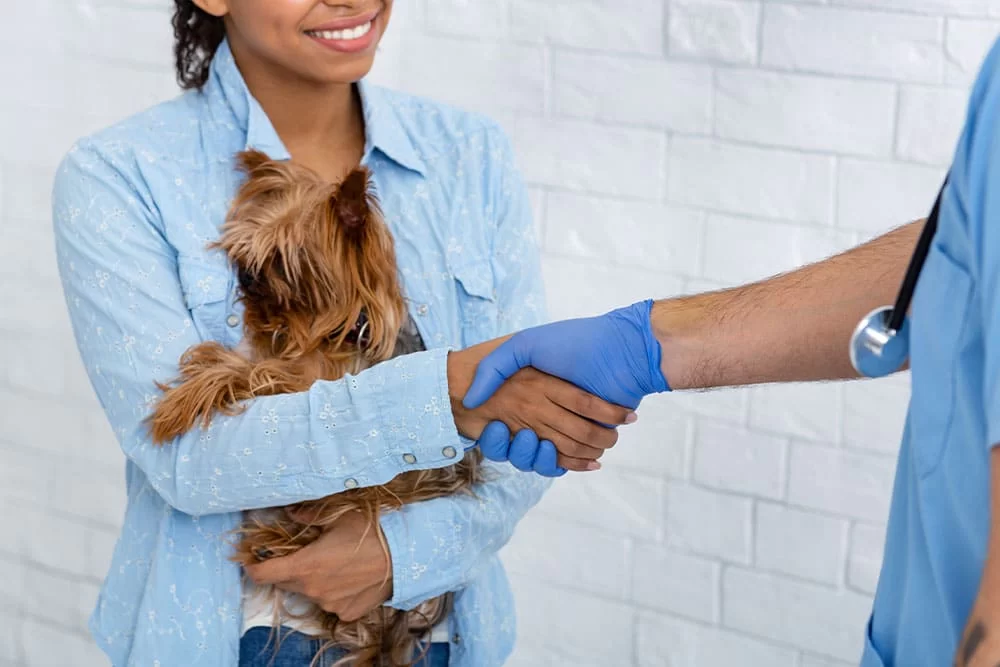How to Prepare Your Pet for Their First Vet Visit: Essential Tips and Guide
As a pet parent, one of the first milestones you’ll face is taking your furry friend to the vet for their very first visit. It’s a big day, not just for your pet but for you too. Whether you’re bringing home a playful puppy, a curious kitten, or a newly adopted adult pet, knowing how to prepare them for this experience will make a world of difference. After all, the first visit sets the tone for their future health care experiences. You want it to be positive and stress-free for both of you!
1. Scheduling the Appointment: What to Consider
Choosing the right vet is crucial. You’ll want a veterinary clinic that’s well-reviewed, has a staff that makes both you and your pet feel comfortable, and offers services that meet your pet's specific needs. When you book your appointment, make sure to choose a time when your pet will likely be at their best—avoid times when they’re typically anxious or just fed. If your pet has an underlying health concern, discuss that with the vet ahead of time so they can prepare accordingly.
Also, consider what vaccinations or treatments may be required during the first visit. Some clinics may recommend specific vaccinations or parasite prevention treatments during a pet’s initial check-up, so it’s a good idea to check in with them beforehand to ensure you have everything ready.
2. Getting Your Pet Used to Their Carrier or Crate
If your pet needs to travel to the vet, they’ll likely be placed in a carrier or crate for transport. Many pets, especially those who are unfamiliar with the crate, can become anxious or fearful. To help ease their anxiety, introduce the carrier to them long before the visit. Leave it out in your home, and place some treats or favorite toys inside to make it a more inviting and less intimidating space.
It’s essential to let your pet get used to the idea of spending time in the carrier even when you’re not headed to the vet. This will reduce their stress on the actual day of the appointment and make the experience feel more routine. A gradual, positive association with the carrier can go a long way in making vet visits less scary for your pet.
3. Preparing Yourself for the Vet Visit
It’s not just your pet who needs preparation—getting ready yourself is just as important. Make sure to gather all necessary documents, including your pet’s adoption papers, vaccination records, or any other health information that might be useful for the vet to know. This is especially critical if your pet has a medical history that might impact their treatment plan.
Additionally, be prepared to answer questions about your pet’s diet, behavior, and any changes in their health. The more information you provide, the better the vet can assess your pet’s overall health and suggest preventative care or treatments. You should also write down any concerns or questions you may have about your pet’s health or behavior to discuss with the vet during the appointment.
4. The Day of the Visit: What to Expect
On the day of your pet’s first vet visit, make sure to leave enough time to get to the clinic early. Arriving early will give you time to fill out any necessary paperwork, and it will allow your pet to settle into the environment before the actual appointment starts. Keep your pet calm by speaking in a gentle, soothing voice while waiting in the lobby.
Once you enter the exam room, the vet will begin by assessing your pet’s general health. They will likely check your pet’s weight, temperature, heart rate, and overall physical condition. For puppies and kittens, the vet will also discuss their vaccination schedule, and for adult pets, they may suggest certain health screenings based on their age or breed.
It’s normal for your pet to feel a little nervous, so be patient and calm. The vet staff is trained to handle anxious pets, so trust them to make the visit as smooth and comfortable as possible for both you and your furry friend.
5. Dealing with Pet Anxiety During Vet Visits
Some pets, especially those going to the vet for the first time, can experience anxiety or fear. This can be caused by the unfamiliar environment, the sounds and smells of the clinic, or the handling during the examination. If you have a pet that’s particularly anxious, talk to your vet before the visit. They may offer tips or prescribe anti-anxiety medication to help calm your pet.
During the visit, use calming techniques such as speaking softly to your pet, offering them treats, or bringing a favorite toy along. Some pets may benefit from staying on your lap or in your arms during the exam, so don’t hesitate to ask the vet if this is an option. The more your pet feels safe and secure, the easier it will be for them to handle the visit.
6. Follow-Up After the Visit
After the first vet visit, you may receive follow-up instructions, such as when to schedule vaccinations or treatments or when to come back for another check-up. If your pet had a more involved procedure like vaccinations or a blood test, make sure to keep an eye out for any changes in their behavior or health and reach out to the vet if you have concerns. This is the best way to ensure your pet’s continued well-being.
Above all, remember that the first vet visit is just the beginning of your pet’s lifelong health journey. By keeping the experience positive and calm, you’re laying the foundation for good future vet visits and a long, healthy life for your furry companion.
For more guidance on finding the right vet and ensuring your pet gets the best care, check out the services available at Hidden Brook Veterinary—your trusted pet care provider in your area!












